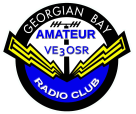2021-02-11, 15:30:47
Frank, SORRY,, But ,, as a retired RF engineer with over 50 years experience in the broadcast and communications industries, and a 60+ year active radio amateur, I feel qualified to comment on erroneous claims and statements made in your recent presentation on 4 Bay dipole antennas.. I am very familiar with these antennas, especially the Sinclair Radio products (SRL) designed and manufactured in Maple Ontario since about 1955.. I worked with the Sinclair engineers in 1975 to design and build special 2 bay VHF and UHF antennas for the CN Tower broadcasters..
Firstly you stated,, “The 4 bay unit did not have any 1/4 wave matching coax - - - - - - - “
Impossible ..... Each dipole , whether it is fed singularly, or as part of an array has a 50 Ohm coaxial feed point (cable), yet the centre feed point of a folded dipole element is 300 Ohms. The 50 to 300 impedance transition is achieved by connecting a 1/4 wavelength section of 125 Ohm cable in series with the 50 ohm “tail” and sliding it inside the outer tubing of the radiator just above the feed point.. It would not be visible to you unless you pulled the cable assembly out of the dipole or cut the aluminum tubing (dipole) open..
Why 125 Ohms? The standard formula for determining the impedance is the SquareRoot of the product of the two impedances.. ( SquareRoot of (300 x 50 ) = 122.474 ( nearest available value = 125 Ohms).. And,, to determine the physical length we must remember that this is 1/4 wavelength in
coax, NOT free space so the wavelength calculated by the familiar formula (468 / F..mhz) must be corrected by applying the Velocity Factor of the cable...
Secondly,, You said “The 1/4 matching coax ---------- would probably be needed for 2 bay or 1 bay ------ but was not used on the 4 bay ---.”
Not really correct,,, The 1 bay antenna will not require any addtional matching because it is already a 50 Ohm antenna... But all the multi element, 2, 4 or 8 bays systems absolutely will.. For example if you connect 2 dipoles for a 2 bay system you will have to match 50/2 = 25 Ohms back up to 50 Ohms with a 1/4 wavelength piece of 35 Ohm cable.. ( cable impedance and length again determined as above) The 4 and 8 bay arrays are even more complex.
Hope this helps sort out some of the confusion that seems to be out there amongst the members. I could go on,, but enough for now....
73 de Paul,, VE3PQ
Firstly you stated,, “The 4 bay unit did not have any 1/4 wave matching coax - - - - - - - “
Impossible ..... Each dipole , whether it is fed singularly, or as part of an array has a 50 Ohm coaxial feed point (cable), yet the centre feed point of a folded dipole element is 300 Ohms. The 50 to 300 impedance transition is achieved by connecting a 1/4 wavelength section of 125 Ohm cable in series with the 50 ohm “tail” and sliding it inside the outer tubing of the radiator just above the feed point.. It would not be visible to you unless you pulled the cable assembly out of the dipole or cut the aluminum tubing (dipole) open..
Why 125 Ohms? The standard formula for determining the impedance is the SquareRoot of the product of the two impedances.. ( SquareRoot of (300 x 50 ) = 122.474 ( nearest available value = 125 Ohms).. And,, to determine the physical length we must remember that this is 1/4 wavelength in
coax, NOT free space so the wavelength calculated by the familiar formula (468 / F..mhz) must be corrected by applying the Velocity Factor of the cable...
Secondly,, You said “The 1/4 matching coax ---------- would probably be needed for 2 bay or 1 bay ------ but was not used on the 4 bay ---.”
Not really correct,,, The 1 bay antenna will not require any addtional matching because it is already a 50 Ohm antenna... But all the multi element, 2, 4 or 8 bays systems absolutely will.. For example if you connect 2 dipoles for a 2 bay system you will have to match 50/2 = 25 Ohms back up to 50 Ohms with a 1/4 wavelength piece of 35 Ohm cable.. ( cable impedance and length again determined as above) The 4 and 8 bay arrays are even more complex.
Hope this helps sort out some of the confusion that seems to be out there amongst the members. I could go on,, but enough for now....
73 de Paul,, VE3PQ




